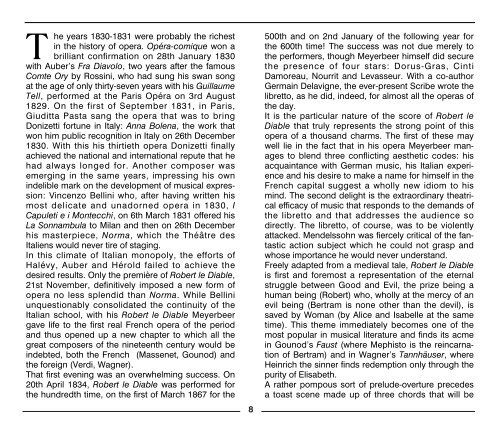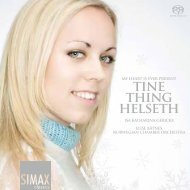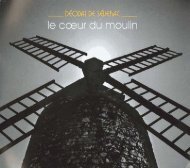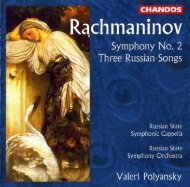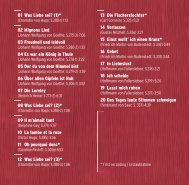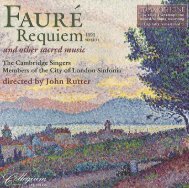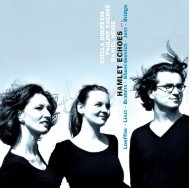ROBERT LE DIABLE
ROBERT LE DIABLE
ROBERT LE DIABLE
You also want an ePaper? Increase the reach of your titles
YUMPU automatically turns print PDFs into web optimized ePapers that Google loves.
T<br />
he years 1830-1831 were probably the richest<br />
in the history of opera. Opéra-comique won a<br />
brilliant confirmation on 28th January 1830<br />
with Auber’s Fra Diavolo, two years after the famous<br />
Comte Ory by Rossini, who had sung his swan song<br />
at the age of only thirty-seven years with his Guillaume<br />
Tell, performed at the Paris Opéra on 3rd August<br />
1829. On the first of September 1831, in Paris,<br />
Giuditta Pasta sang the opera that was to bring<br />
Donizetti fortune in Italy: Anna Bolena, the work that<br />
won him public recognition in Italy on 26th December<br />
1830. With this his thirtieth opera Donizetti finally<br />
achieved the national and international repute that he<br />
had always longed for. Another composer was<br />
emerging in the same years, impressing his own<br />
indelible mark on the development of musical expression:<br />
Vincenzo Bellini who, after having written his<br />
most delicate and unadorned opera in 1830, I<br />
Capuleti e i Montecchi, on 6th March 1831 offered his<br />
La Sonnambula to Milan and then on 26th December<br />
his masterpiece, Norma, which the Théâtre des<br />
Italiens would never tire of staging.<br />
In this climate of Italian monopoly, the efforts of<br />
Halévy, Auber and Hérold failed to achieve the<br />
desired results. Only the première of Robert le Diable,<br />
21st November, definitively imposed a new form of<br />
opera no less splendid than Norma. While Bellini<br />
unquestionably consolidated the continuity of the<br />
Italian school, with his Robert le Diable Meyerbeer<br />
gave life to the first real French opera of the period<br />
and thus opened up a new chapter to which all the<br />
great composers of the nineteenth century would be<br />
indebted, both the French (Massenet, Gounod) and<br />
the foreign (Verdi, Wagner).<br />
That first evening was an overwhelming success. On<br />
20th April 1834, Robert le Diable was performed for<br />
the hundredth time, on the first of March 1867 for the<br />
8<br />
500th and on 2nd January of the following year for<br />
the 600th time! The success was not due merely to<br />
the performers, though Meyerbeer himself did secure<br />
the presence of four stars: Dorus-Gras, Cinti<br />
Damoreau, Nourrit and Levasseur. With a co-author<br />
Germain Delavigne, the ever-present Scribe wrote the<br />
libretto, as he did, indeed, for almost all the operas of<br />
the day.<br />
It is the particular nature of the score of Robert le<br />
Diable that truly represents the strong point of this<br />
opera of a thousand charms. The first of these may<br />
well lie in the fact that in his opera Meyerbeer manages<br />
to blend three conflicting aesthetic codes: his<br />
acquaintance with German music, his Italian experience<br />
and his desire to make a name for himself in the<br />
French capital suggest a wholly new idiom to his<br />
mind. The second delight is the extraordinary theatrical<br />
efficacy of music that responds to the demands of<br />
the libretto and that addresses the audience so<br />
directly. The libretto, of course, was to be violently<br />
attacked. Mendelssohn was fiercely critical of the fantastic<br />
action subject which he could not grasp and<br />
whose importance he would never understand.<br />
Freely adapted from a medieval tale, Robert le Diable<br />
is first and foremost a representation of the eternal<br />
struggle between Good and Evil, the prize being a<br />
human being (Robert) who, wholly at the mercy of an<br />
evil being (Bertram is none other than the devil), is<br />
saved by Woman (by Alice and Isabelle at the same<br />
time). This theme immediately becomes one of the<br />
most popular in musical literature and finds its acme<br />
in Gounod’s Faust (where Mephisto is the reincarnation<br />
of Bertram) and in Wagner’s Tannhäuser, where<br />
Heinrich the sinner finds redemption only through the<br />
purity of Elisabeth.<br />
A rather pompous sort of prelude-overture precedes<br />
a toast scene made up of three chords that will be


